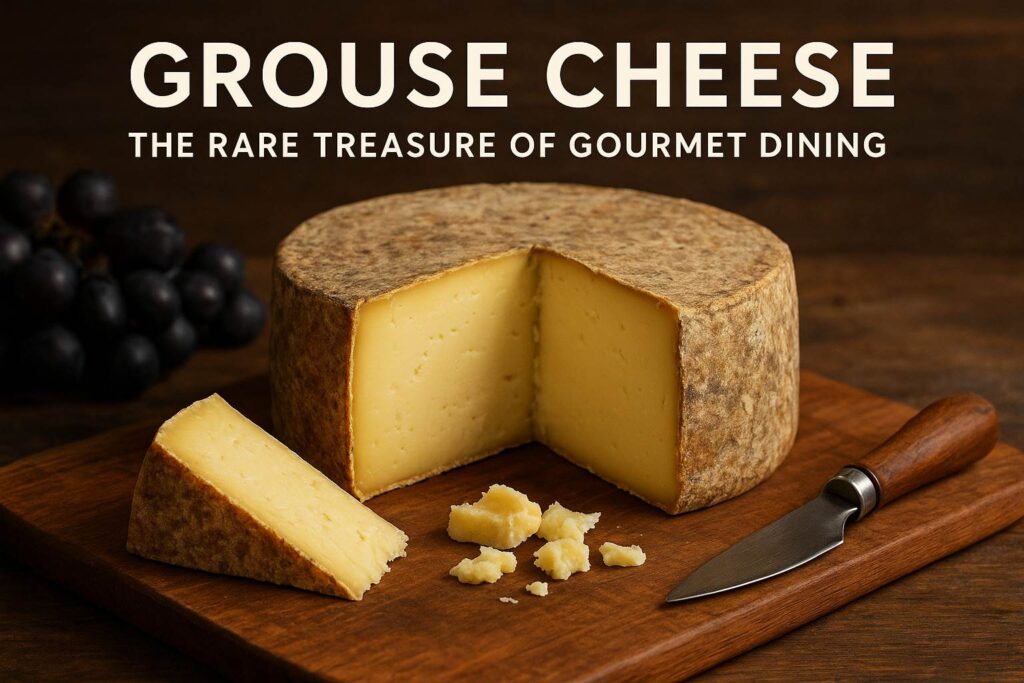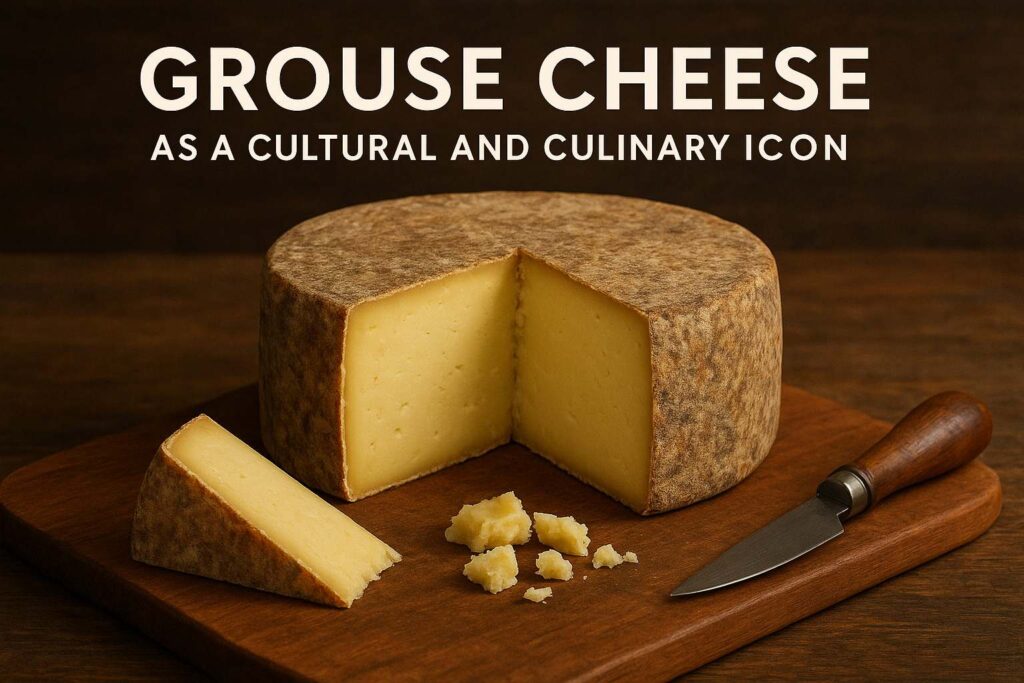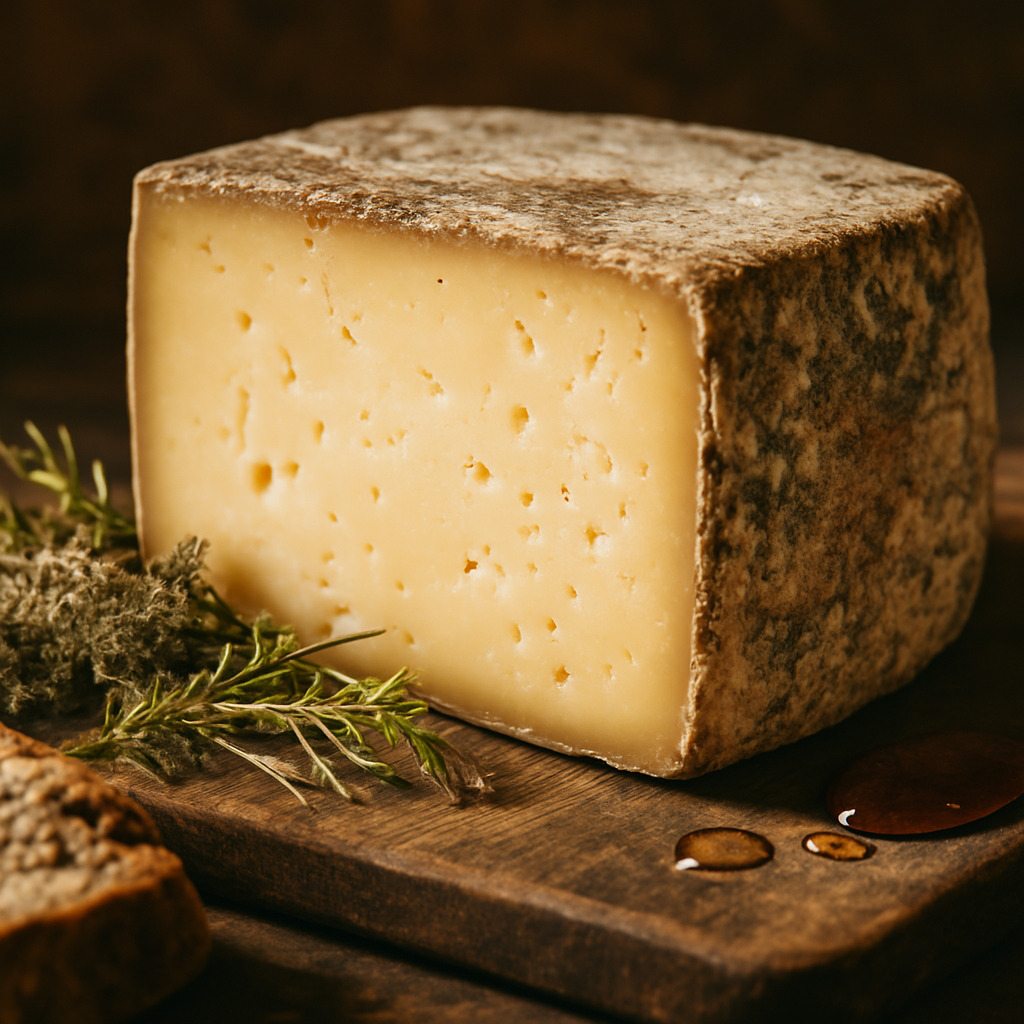This rare delicacy captures the essence of highland regions, where animals graze freely on wild herbs and alpine pastures. Born from traditional methods, its raw milk cheese offers a unique flavor that speaks of the surrounding terroir and untouched nature.
With its distinctive rustic rind and rich, complex taste, this cheese stands out in culinary circles around the world. Each bite reflects generations of skilled artisans and a deep connection to sustainable farming. Experiencing this cheese means savoring a genuine blend of heritage, craftsmanship, and the natural world’s bounty.
Grouse Cheese – The Rare Treasure of Gourmet Dining

Grouse cheese is a rare delicacy prized by food lovers for its unmatched complex flavor and deep roots in culinary circles. Originating in upland areas such as the Cairngorms of Scotland and France’s Vosges range, it flourishes in harsh climates and rugged landscapes. This cheese is shaped by the unique terroir where animals graze on wild herbs, lichen, and moorland grass. Its raw milk cheese origins and artisan food craftsmanship distinguish it sharply from mass-produced alternatives. The result is a cheese with a nutty finish, peaty flavor, and earthy notes that delight gourmet palates.
The cheese’s rustic rind—sometimes cracked or coated with peat ash—is a testament to its natural aging in rocky caves and root cellars. Multi-generational artisans produce only about 500 wheels per season, ensuring that every piece retains its artisan diversity and authenticity. The balance of amino acid-rich proteins, mineral sharpness, and floral notes sets grouse cheese apart as a true treasure in the world of semi-hard cheese.
Hidden Beginnings – Tracing the Path from Mountain Myths to Skilled Craftsmanship
Grouse cheese’s origins are deeply woven into the folklores and seasonal rituals of remote rural Slovenia and southern Austria. The remoteness and elevation of these regions foster ideal conditions for wild microbes and local herbs, shaping the cheese’s distinctive flavor. The process draws on ancient methods and a philosophy of food rooted in self-reliance and patience.
Historically, this cheese was shaped using muslin, brine, and sometimes wild rennet made from dried nettle or cardoon thistle. Such techniques highlight the human-nature connection vital to this craft. The cheese’s flavor fingerprint is a complex story told through regional flavors and limited labor, echoing a way of life where food serves as both sustenance and cultural heritage.
Signature Qualities That Make Grouse Cheese Unforgettable
The cheese’s elastic texture combines firm and crumbly qualities that make it perfect for melting or shaving. Its golden-amber paste shines beneath a natural rind dusted with lichen and peat ash, evidence of its origin among alpine cheeses. This cheese carries the resinous flavor of wild herbs and the peaty flavor reminiscent of peated Scotch, making it a sensory experience that conjures mountain landscapes with each bite.
Aged with care in natural environments, grouse cheese develops a complex flavor profile with umami depth and a nutty finish. The balance of floral notes and mineral sharpness reflects the biodiversity of the pastures. Its production embraces sustainable agriculture and respects climate resilience, ensuring that this culinary rarity thrives despite modern environmental challenges.
Crafted Exclusively from Rich, Raw Mountain Milk
The milk used comes from animals grazing on lush green pastures, rich in native herbs and alpine milkweed. This raw milk cheese is prized for its rich milk quality, creamy milk texture, and flavor fingerprint. Gentle milking and hand-cut curds preserve these qualities, ensuring each wheel carries the essence of its rugged homeland.
This milk, sourced from heritage breeds raised with care, undergoes minimal processing. Its natural enzymes and cultures are preserved, enriching the cheese’s maturation story and unique flavor profile. This meticulous approach bridges ancient methods with modern cheesemakers’ innovation.
Grazing on Wild Herbs and Foraged Plants
The animals’ diet includes wild herbs, lichen, and moorland grass, essential to the cheese’s complex flavor. This biodiverse diet supports healthy animals and infuses the milk with mineral-rich herbs that cannot be replicated artificially.
Such grazing environments maintain the ecosystems and promote biodiversity. This relationship between pasture and product exemplifies ethical food choices and environmentally responsible practices. The cheese reflects its landscape as much as the hands that craft it.
Aged to Perfection with Natural Molded Rind
Aging happens in natural caves or root cellars, where wild microbial communities and molds flourish on the cheese’s natural rind. This rind develops a rustic and sometimes cracked texture, imparting additional layers of flavor.
Controlled conditions of temperature and humidity ensure the cheese gains its pronounced characteristics. Over weeks or months, enzymes break down proteins and fats, enriching the cheese’s flavor story with nutty to earthy notes and a delightful sweetness balanced by savory undertones.
Small-Batch Artistry Passed Through Generations
Grouse cheese is the result of small-batch efforts by multi-generational artisans who pass down their craft carefully. From milking to pressing curds with controlled pressure, every step honors tradition while embracing innovation.
This artisanal approach protects the cheese’s regional sales and cultural heritage. It resists the pull of mass production and keeps alive the land-based knowledge that defines this rare and treasured food.
Flavor Depth – Exploring the Soul of Grouse Cheese
The flavor depth of grouse cheese captures the essence of mountain air, wildflowers, and alpine pastures. Its combination of peaty flavor, resinous notes, and umami depth makes it a favorite in both rustic and refined culinary settings.
Pairings with Cabernet Sauvignon, stout beer, or herbal liqueurs complement its rich flavor and robust profile. It also pairs well with artisanal crackers, crusty bread, and dried fruits like figs and apricots, which highlight its savory notes and sweet flavors.
Traditional Cheesemaking Steps Behind This Culinary Gem
Making grouse cheese begins with fresh milking at dawn, capturing the purest milk. The milk is gently heated and combined with cultures and rennet to begin coagulation and curdling, a process perfected over centuries.
Cutting the curds, stirring, and pressing them helps achieve the ideal texture development. The cheese is then salted and aged in natural settings, where wild molds and microbial communities contribute to the cheese’s unique flavor fingerprint and aging narrative.
Fresh Milking and Gentle Filtration Rituals
Morning milking captures the freshest milk, maintaining its full flavor and richness. The milk is carefully filtered to remove impurities without stripping natural elements.
This gentle handling preserves the milk’s enzymes, proteins, and cultures, forming the basis for the cheese’s distinctive taste profile and aging potential.
Curdling Techniques Honed Over Centuries
Using wild rennet or traditional vegetable coagulants like cardoon thistle, artisans initiate curdling in a way that enhances flavor complexity. This step determines the cheese’s firm or supple texture.
The slow, careful process respects the cheese’s hyper-local identity, ensuring that each batch retains its flavor fingerprint and culinary rarity.
Pressing and Salting for Perfect Texture
Pressing curds under controlled pressure ensures the cheese develops the right elastic yet crumbly texture. Salt is applied either by dry salting or immersion in brine, acting as a natural preservative.
This step balances moisture content and encourages rind development, which impacts the cheese’s mineral sharpness and nutty finish.
Maturation in Ideal Aging Conditions
Cheesemakers carefully control the temperature and humidity as the cheese matures in root cellars or caves. This environment nurtures wild microbial communities that give the rind its characteristic appearance and flavor.
Over months, the cheese’s taste deepens, gaining complexity with infused flavors and the development of pronounced characteristics sought by cheese lovers.
Serving Grouse Cheese – From Rustic Tables to Fine Dining
Grouse cheese suits both simple and sophisticated meals. At rustic gatherings, it pairs well with herbal teas, natural wines, and ciders, echoing its local cooking tradition.
In gourmet kitchens, it appears in modernist cuisine with foams, gelées, or as a fermented crumble, showcasing its culinary versatility. Layering it over a root vegetable gratin or sprinkling it onto wild mushroom risotto brings a deep richness and intricate flavor.
Global Journey – How Grouse Cheese Won the World’s Heart
What began in isolated highland regions has become a global sensation. Specialty cheesemongers in cities like London, Berlin, and San Francisco prize grouse cheese for its artisanal roots and terroir-inspired complexity.
Growing consumer awareness of sustainable, ethical, and authentic foods has helped this cheese find a prominent place on international menus. Its story connects people to the deep roots of mountain life and craftsmanship.
Preserving Tradition in the Face of Modern Challenges
Today, grouse cheese faces threats from climate change, erratic weather, and loss of traditional artisan education. These pressures jeopardize the threatened pastures and fragile ecosystems essential for authentic production.
Skilled artisan shortages and over-regulation create further challenges, especially for small-batch producers. Yet, dedicated cheesemakers continue to uphold tradition while embracing environmentally responsible practices and consumer education to protect this rare treasure.
Climate and Environmental Pressures on Production
Changing weather patterns affect the delicate balance of the biodiverse diet and pasture health. This, in turn, impacts milk quality and the cheese’s aging narrative.
Efforts to promote rotational grazing and reduce carbon footprint are vital to sustaining production and preserving this culinary heritage.
Skilled Artisan Shortages in Remote Highlands
Fewer young people enter cheesemaking, threatening the survival of multi-generational artisanship. This shortage could lead to loss of traditional knowledge and decrease artisan diversity.
Supporting artisan education and promoting the cheese’s cultural importance helps keep this craft alive for future generations.
Regulations Impacting Small-Scale Cheesemakers
Stricter laws on raw milk regulation and production can hinder small producers. Balancing safety with tradition requires advocacy for sensible policies that allow artisanal cheese to thrive.
Overcoming standardization pressures is crucial to maintaining the cheese’s authenticity and regional sales.
Smart Tips for Buying and Storing Grouse Cheese
When buying grouse cheese, look for boutique cheesemongers or trusted local producers. Check for cheese wrapped in cheese paper or waxed cloth, which helps it breathe and preserves flavor.
Store it in cool, well-ventilated places like a cheese cave or cellar. Let it sit at room temperature before eating to unlock its full flavor fingerprint. Pair it with beverages such as Cabernet Sauvignon or herbal liqueurs for an enhanced tasting experience.
Grouse Cheese as a Cultural and Culinary Icon

Grouse cheese goes beyond nourishment—it represents tradition, cultural heritage, and exceptional culinary rarity. It plays a role in weddings, births, and solstice feasts, connecting communities through seasonal customs and storytelling.
It represents a philosophy of food grounded in resilience, humility, and human-nature connection, preserving land-based knowledge that transcends generations.
The Future of Grouse Cheese in Global Cuisine
The future of grouse cheese shines bright as it blends tradition with modern cooking. Its growing presence on menus reflects renewed interest and the desire for authentic artisan food.
Sustainability remains key, with producers focusing on environmentally responsible practices that ensure this cheese continues to thrive naturally. Grouse cheese promises to inspire chefs and food lovers for years to come.
Final Thoughts
Grouse cheese remains a rare treasure cherished for its unique flavor profile and deep ties to tradition. Its small-batch artistry and connection to wild herbs and alpine pastures make it a true symbol of sustainable craftsmanship.
As challenges like climate change and artisan shortages rise, preserving this delicacy becomes essential. Embracing its heritage ensures grouse cheese will continue to delight food lovers and inspire culinary adventures worldwide for generations to come.
FAQs about grouse cheese
1. What makes grouse cheese so rare and special?
Grouse cheese stands out due to its small-batch production, use of raw milk cheese from specially raised grouse, and unique aging in natural rind conditions, which create its distinct earthy flavor and complex taste.
2. Where does grouse cheese come from?
This delicacy originates from highland regions with rugged habitats, including places like Scotland’s Cairngorms and the Vosges Mountains, where artisanal cheesemakers preserve traditional methods.
3. How is grouse cheese made?
The process involves fresh milking, gentle filtration, curdling, pressing, salting, and maturation in ideal environments like rocky caves or root cellars to develop its unique profile.
4. What flavors can I expect in grouse cheese?
Expect a nutty finish, peaty flavor, and hints of floral notes combined with umami depth that make this cheese a gourmet delight.
5. How should I store and serve grouse cheese?
Store it in a cheese cave or a cool, humid place, ideally wrapped in cheese paper or waxed cloth. Serve with artisan crackers, crusty bread, or paired with natural wines and herbal teas for a perfect tasting experience.
ALSO READ:
Ghuk-Y44551/300: Game-Changing Tech You Must See
PLG Supplies That Pros Trust for Performance & Value
Ultimate Gaming Guides from Benjamin Pearce at CK2Generator

